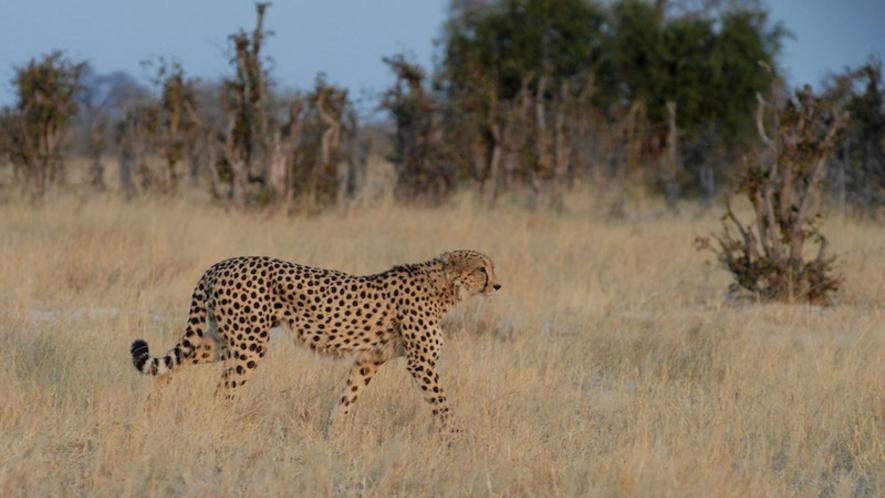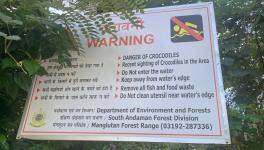CAG Slams Gujarat Govt Over Wildlife and Protected Area Mismanagement

Image Courtesy: Rawpixel
New Delhi: Government agencies in Prime Minister Narendra Modi’s home state Gujarat are bypassing rules on conservation of forests and wildlife, a report by the country’s premier auditing agency, the Comptroller & Auditor General (CAG) of India, has revealed.
The report, highlighting the Gujarat government’s lacunae, was tabled in the Parliament during the recently concluded five-day special session. This comes at a time when talks have already begun to provide a shot in the arm to Project Cheetah, a wildlife conservation project with firm backing from PM Modi.
The audit report highlights violations in obtaining mandatory clearances from central government statutory agencies – the National Board for Wildlife (NBWL) and the Forest Advisory Committee (FAC). The violations happened in at least three road widening projects in Gujarat between 2016 and 2021. The NBWL and the FAC advise the Union Ministry of Environment, Forests & Wildlife (“the ministry”) on the feasibility of diverting land from protected areas, like wildlife sanctuaries and reserve forests, respectively.
Two of the projects involved the widening of state highways and were undertaken by the Road and Buildings (R&B) Department of Gujarat government. Another road widening project was undertaken by the Union Ministry of Road Transport and Highways through the National Highways Development Authority. The report states that neither was any action taken against the user agencies for violation of rules nor any penalties imposed upon them by the BJP-led Gujarat government.
Road widening “within” Balaram Ambaji Wildlife Sanctuary in the Banaskanthsa district commenced “before” receiving FAC and NBWL clearances from the ministry. This road connects the towns of Danta and Ambaji. Since the work commenced before the approval of a wildlife mitigation plan, the road design could not be modified later to allow the safe passage of animals in the area where the project was undertaken. The widening work was executed in four packages. The remaining three packages were undertaken in the wildlife sanctuary's eco-sensitive zone (ESZ).
Prior approval of the FCA was obtained for the execution of work in only one of the three packages in which work was undertaken in the ESZ area. However, NBWL clearance was never obtained for this package. Further, the state government did not get FCA or NBWL clearance for the remaining two packages.
In another case, the R&B department issued a work order in June 2019 for widening a road passing through the Poorna Wildlife Sanctuary and its ESZ, but clearances were obtained from the ministry only in June 2022, much after the completion of work. The wildlife sanctuary is spread across the inter-state boundaries of Gujarat and Maharashtra. It is located on the pristine Western Ghats, which has been declared a World Heritage Site by UNESCO. Gujarat government had applied for clearances from the ministry in January 2021, only after the commencement of work. The stretch of road was widened from its existing width of 7 metres to a width of 10 metres. However, in the application filed by the Gujarat government for forest clearance, the proposed widening was incorrectly stated as 0.25 metres (0.125 metres on either side), though the actual widening was for 3 metres.
In the widening work of a 24-km stretch of National Highway (NH)-56, the Gujarat government incorrectly stated that the project site was more than 20 km from the Shoolpaneshwar Wildlife Sanctuary in the Satpura mountain range. Based on incorrect information furnished to it, the ministry granted forest clearance for the widening project in 2017. However, the CAG audit revealed that the actual distance of the road stretch from the wildlife sanctuary was a mere 2.5 km.
The state government had further stated that the project did not require environmental clearance at all because it was located 20 kms away from the protected area. The audit revealed that a 5-km stretch of the project fell within the ESZ of the sanctuary. In response to a query raised by the audit team, the government said that necessary action was taken to obtain post facto approval when it was noticed that the distance was incorrectly stated.
“The CAG has done a commendable job in highlighting the serious deficiencies of the forest department of Gujarat. Despite the abundance of funds allocated to the department, they have not been able to demarcate the boundaries of their forests and their Protected Areas. They have permitted illegal road construction through sanctuaries. Management plans for Protected Areas have not been properly prepared. Eco-sensitive zones have not been properly identified, nor have their boundaries been demarcated. Wildlife corridors have not been identified,” said Debi Goenka of the Mumbai-based non-profit Conservation Action Trust.
Violation of conservation rules is not limited to the execution of infrastructure projects alone but is also inherent in the policies of the Gujarat government, the audit has revealed. More than five years after Modi government issued a set of guidelines for the promotion of ecotourism in and around protected areas like wildlife sanctuaries and forests, the Gujarat government is yet to update its state-level policy that it had formulated in the year 2007. Notably, the draft guidelines for the central ecotourism policy had been issued much earlier in June 2011.
The central policy issued in September 2018 prescribes identifying potential ecotourism sites and fixing the carrying capacity of protected areas in terms of the number of vehicles, visitors and duration of exposure. However, the Gujarat ecotourism policy prescribes estimation of carrying capacity only for specific sites. Gujarat's policy has no provision for capacity building of communities living in or near protected areas, even though the central guidelines say that state governments should focus on the socio-economic development of local stakeholders in developing ecotourism projects.
During visits conducted to wildlife sanctuaries by the audit team, it was revealed that lodges, hotels or safari parks were being run inside six ecotourism sites. These sites are in Jambughoda, Ratanmahal, Shoolpaneshwar and Poorna wildlife sanctuaries. Permanent structures, including cement buildings, had been raised at these sites in contravention of conservation rules. When asked by the audit team, Gujarat government did not furnish copies of approval from the ministry for building these permanent structures within the sanctuaries.
Instances of improper solid management were found by the audit team in temples inside or outside certain wildlife sanctuaries, including Jessore, Jambughoda and Balaram Ambaji. The audit report notes that open defecation by pilgrims near the water sources of Balaram Ambaji Wildlife Sanctuary posed the threat of infection and diseases for wild animals. There was non-compliance with terms and conditions imposed by the ministry regarding the wildlife clearance for the Zand Hanuman Temple inside Balaram Ambaji sanctuary. The audit team found that there had been unauthorised constructions in addition to the existing built-up area, improper solid waste management like burning of coconut husk and lack of strict implementation of the ban put in place by the central government on the use of single-use plastic.
The implementation of solid waste management rules in other wildlife sanctuaries, like Ratanmahal, Shoolpaneshwar and Poorna, was not satisfactory and up to the mark. These sanctuaries are kept open throughout the year, irrespective of the mating and regeneration periods of the wild animals inside. Further, there was no ceiling on the entry of visitors into the sanctuaries in the absence of carrying capacity studies.
Laxities in the management have come to light even though the central government has been providing adequate funds to the forest department of Gujarat. However, the audit has revealed that the state government has not properly utilised the available resources. The report states that between 2016 and 21, the forest department used only 11 to 21% of the total funds released to it for protecting, conserving, and managing protected areas.
“On average, only 15% of the funds provided to the forest department was spent on safeguarding protected areas. It seems that the department exists only on paper. The government needs to revamp the department comprehensively to get rid of non-performing assets and bring in officers and staff who can perform their duties on the ground. The department needs to shift its focus from managing zoos and lions to protecting its biodiversity and habitats, including their coastal and marine assets, as well as critically endangered birds such as the Great Indian Bustard that are on the verge of extinction,” added Goenka.
Earlier, in a separate audit report of 2018, the CAG had pulled up the Gujarat government for its poor efforts at wildlife conservation. The audit found that despite an increase in the number of Asiatic lions, which is the state animal of Gujarat, there was no increase in protected areas in the state after 2008.
The 2018 report further highlighted the laxity on the part of the state government in the usage and implementation of modern technology for wildlife conservation. The Gujarat government, the report said, had outsourced the genome mapping project for lion conservation to an agency that did not possess the required expertise, thereby slowing down its entire progress.
The NBWL approved 44 proposals between February 2008 and August 2016 to undertake permitted activities in protected areas of Gujarat. “Instances of allowing prohibited activities within the protected areas and not ensuring compliance with conditions subject to which certain projects were permitted within the Protected Areas were observed,” the CAG report stated.
Violations had also been observed in the establishment of windmills and electricity transmission lines within protected areas while the Gujarat government had failed to recover the net present value of forest land diverted for infrastructure projects in certain instances.
The writer is a senior independent journalist. The views expressed are personal.
Get the latest reports & analysis with people's perspective on Protests, movements & deep analytical videos, discussions of the current affairs in your Telegram app. Subscribe to NewsClick's Telegram channel & get Real-Time updates on stories, as they get published on our website.























